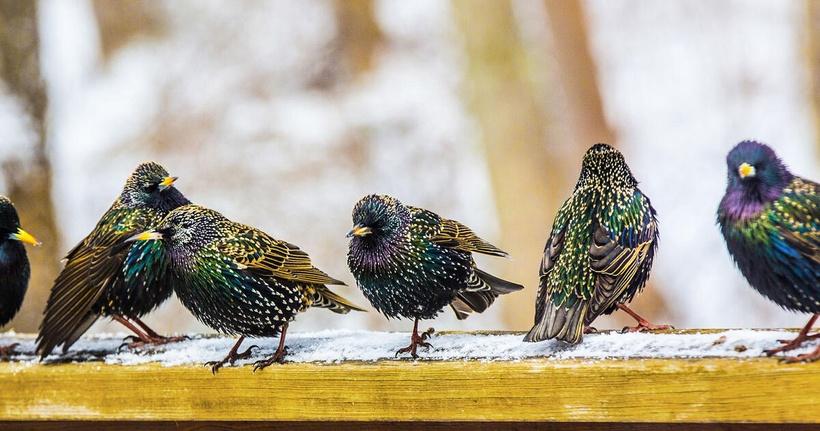A Few Notes about the History of the Christmas Bird Count
by Bill Clark

Late in the 19thCentury, an annual Christmas Day celebration centered around a “side hunt.” A “side hunt” would land you in a federal courtroom in 2021. But, in the days before conservation was an issue, teams would form, and each team would try to kill as many birds (and other wildlife) as possible in a designated time. In an era when waterfowl and songbirds were losing populations and such species as the Carolina parakeet and passenger pigeon were either extinct or soon would be, the carnage was a big event on Christmas Day. In 1900, a concerned naturalist named Frank Chapman offered an alternative – see how many species and how many individual birds a team could count – not kill – on Christmas Day. Thus, the Christmas Bird Count was born and soon the practice spread from coast to coast. Chapman’s first effort captured the attention of a total of 27 birders in 25 spots from New England to California, including Toronto and LaGrange, Missouri. It became a major project of the fast-growing National Audubon Society. Chapman called it the “Christmas Bird Census” – and it truly lived up to that title. To standardize matters, count circles were formed and each had a limitation of a 15-mile diameter around a given point that was chosen with the idea that it would include as many birding hot spots as possible in that circle. The report following the 2019-20 pre-pandemic count showed a total 2,646 count circles in the world, 1,992 of them in the U.S., 469 in Canada and 186 scattered in Latin America, the Caribe and the Pacific Islands – Hawaii, Guam, etc. The 2019-20 count drew a total of 81,000-plus observers with Edmonton, Alberta, Canada, the most active count with 431 birders in action. The most species seen in a count circle north of the Rio Grande was 229 at Mad Island Marsh in South Texas. The average Christmas counts in the U.S. and Canada produce a total of about 600 species. In 2019-20, Missouri had 27 count circles, down from a decade earlier. Columbia has had a count circle since 1962, established with the center point at Rock Bridge Elementary School, which catches most of the county from the Missouri River north to the Fairgrounds and all of Columbia. My first trip on a Christmas Count came in 1972 by accident and out of curiosity. I’ve been a part of every count since. This will be my 50th. I’ve told this story many times and I’ll tell it again: Prior to 1972, I had knowledge of only three avian species – Thanksgiving Turkey, Christmas Goose and Kentucky Fried Chicken. I was a sportswriter at the Columbia Tribune who happened to be the only person in the Tribune office one Saturday morning except the city editor. When a group of women besieged him with a pile of data about the bird count, he took one look and said: “That’s a sports story. See that guy over there,” pointing at me. I took a look at the layout and decided that it was worth the effort and agreed to do the story. Before I was done, the story took up an entire page of the sports section. I also accepted their offer to join the count. Why not? I then did a follow-up story and referred to one of the birders, who swore he had seen a Lincoln’s sparrow (not likely, I learned later). He was so excited that I wrote: “I thought he had just seen Abe, himself.” I was hooked. An entire new world opened for me and 50 years later, I’m still writing bird columns and doing weekly Wednesday birding trips around the state. After the first half-decade, I was given my own area (which no one else wanted since it is primarily concrete, asphalt and lousy habitat, but it is in the circle – that area north of Interstate 70. We often lead the entire day’s tally with starlings, house sparrows and pigeons. For the past dozen years, Bill Mees has been my running mate. We picked up another last year – Bob Schreiber – also the new member of our Wednesday birding group. The Columbia Christmas Count is on Saturday, December 18. We’ll be in the field from 7:30 a.m. until 4:30 p.m. We have an empty seat if anyone would like to join us. We’ll guarantee you plenty of starlings and house sparrows, a good local lunch, and inspiring conversation. Just like every Wednesday. You will be a part of the normal crowd of 80,000 birders who will be doing bird counts worldwide and adding to the huge bank of citizen science which for more than a century has provided ornithologists with a continuous stream of information about migratory patterns, population problems, changes due to global warming, habitat loss, etc. Our count circle has 12 different areas. If you would like to join with a party in an area with less concrete and asphalt and log something other than starlings, there may be open seats in other cars. To find out, send an e-mail to lottie.bushmann@gmail.com. If you would like to add to your starling and house sparrow list, give Ol’ Clark a call at 573-474-4510 or send him a message at yeoldclark@gmail.com. All three in the Clark car have both vaccinations and their boosters and all three are so slow these days that they are unable to catch anything. You should be safe – unless attacked by a murder of crows. 30 |
